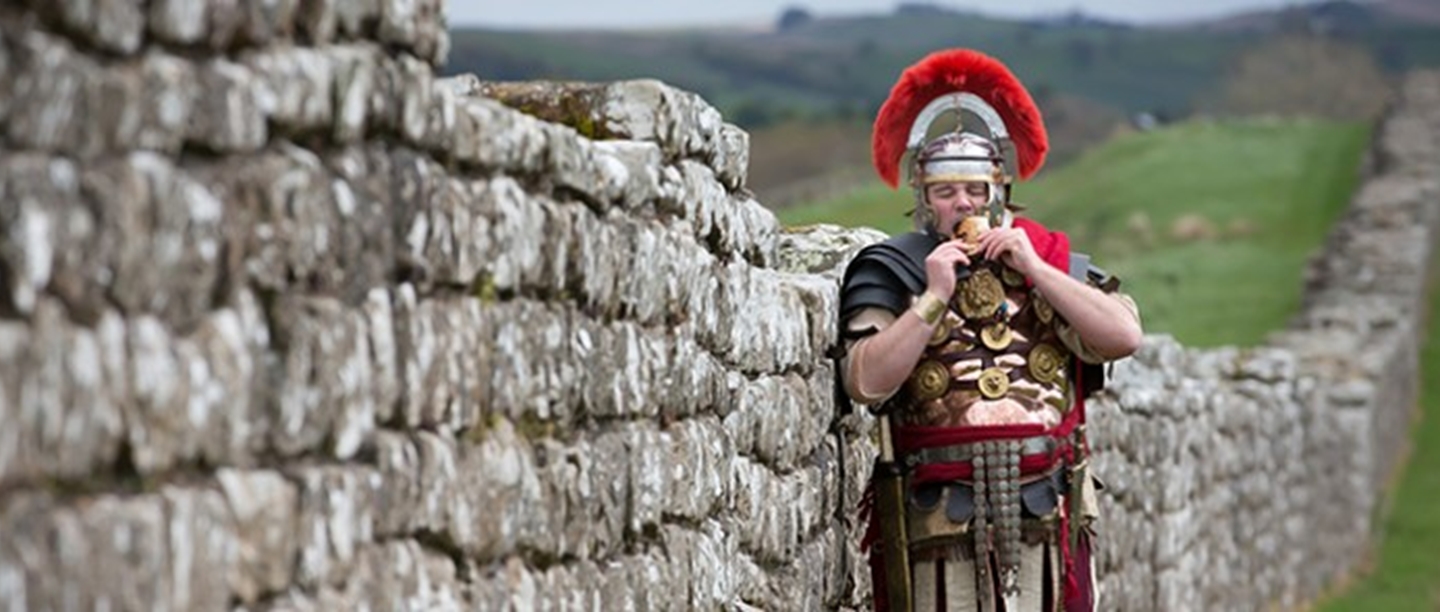
Food historian, cook, broadcaster and writer Annie Gray specialises in the history of food and dining in Britain from the 1600’s to the present day. Here she takes us through the unlikely origins of the burger in Britain
We all know that the Romans left a huge mark on Britain, introducing many aspects of modern life – even if they disappeared for a while after the Romans left the country. Central heating, aqueducts, concrete, the 12 month calendar, and comprehensive sewage systems – we owe them all to the Romans. We can see their legacy all over Britain, from villas to forts, from town layouts to their characteristically straight roads. The most iconic Roman architectural feat to survive today is, of course, Hadrian’s Wall, but Roman thinking and construction underlies much of our landscape, whether rural or urban.
When the Romans came to Britain, they came as successful invaders. They weren’t interested in assimilating local traditions: they wanted to recreate the life they aspired to in Italy in this new and, to them, somewhat backward province. As they settled in, demand grew for all the goods they would have had access to at home. Their desire for the foods they knew and loved – spices and fruit, wine and olive oil – would fundamentally alter the British diet forever.
There are plenty of Roman dishes we still find delicious today, and many of their techniques wouldn’t be unfamiliar in a modern kitchen. We don’t know much about pre-Roman cookery, but we have a very handy source for the Romans – the famous cookbook ‘Apicius’, a compilation of recipes written by lots of different people. From this book we’ve uncovered a recipe – ‘Isicia Omentata’ in the original Latin – which looks a lot like a modern burger. The recipe uses minced pork, which was a popular meat in Roman Britain, flavoured with pepper, wine and Garum (a rich fish sauce), and served with a wine sauce. This ‘burger’ would have been a much more upmarket luxury offering than those we’re used to today, however, served as part of a feast.
Recipe for 4 ‘Roman Burgers’
- 500g minced meat
- 60g pine kernels
- 3 tsp. Garum (a salty fish sauce, this can be substituted for fish based sauces found in supermarket, or regular salt if preferred)
- Ground pepper
- Handful of coriander
- Juniper berries (optional)
- Caul fat (optional)
Method
Grind up the pine kernels, and then mix in with the minced meat and other ingredients. Shape the mixture into patties (optional step: wrap this in Caul Fat). Cook over a medium heat or BBQ for 5 minutes on each side. Serve plain or in a flat bread bun.
Roman Burgers made from a 1,500 year old recipe
The idea of chopped meat flavoured with herbs and spices survived the Roman exit from Britain. Medieval versions went by different names, such as rissoles and pompeys, and shapes – they could be flat, or more like meatballs. By the Georgian period, fried and flavoured minced meat had become part of the established culinary repertoire. Usually called patties or rissoles, they could use any meat, depending on what was available. The Georgians were also influential in establishing catsup, which would, as tomatoes grew more popular in the Victorian period, become tomato ketchup. They were also very keen on pickles, including cucumber, which is related to our modern gherkin.
At the end of the Victorian period, the first genuine hamburgers appeared. Before then, the Victorians ate a version of the burger called minced collops. Minced beef patties became popular in America, in restaurants and at home. In 1890, the word ‘hamburger’ first appeared in print – it almost certainly comes from the ‘Hamburg steak’, which was an American dish of flattened fried meat balls served in the 1870s and 1880s. It was named for the German port and the high quality beef it was associated with, and initially appeared in German restaurants. It was cheap to make, using offcuts of meat otherwise unusable, easy to cook and, after the invention of mincing machines in the mid-19th century, quick and simple to prepare. By the 1890s it was being served in a bread roll to hungry workers from lunch wagons. The burger as we know it had finally arrived.
Try a Roman Burger
Top off your Roman experience by sampling this historical snack for yourselves. Roman style burgers are on the menu at Birdoswald Roman Fort, Hadrian's Wall. Pull up a chair inside the rustic style café or kick back on a picnic bench outside. Peckish walker, cyclists and passers-by are welcome too. You won't find Roman burgers served anywhere else on the Wall.
Plan your visit